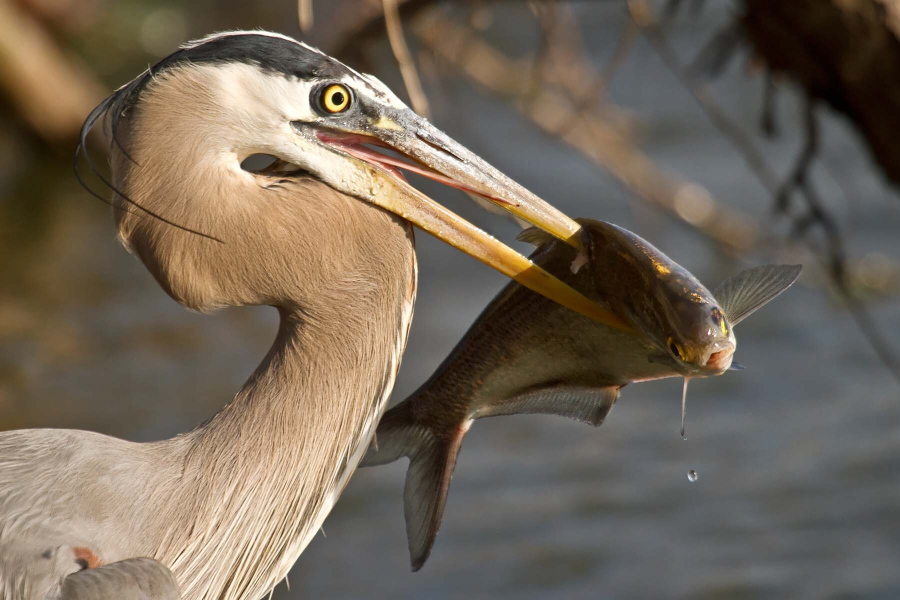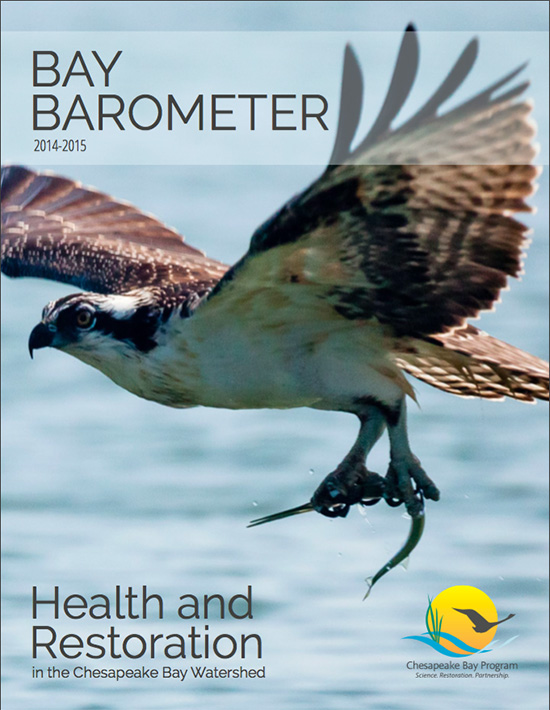Chesapeake Bay Program makes measured progress toward restoring the watershed
The latest Bay Barometer offers a snapshot of environmental health

Our latest look at Chesapeake Bay health reveals early evidence of our progress toward the Chesapeake Bay Watershed Agreement. While the restoration of some habitats remains slow, experts report positive observations of pollution loads, underwater grass abundance and some fish and shellfish populations.

Released today, Bay Barometer: Health and Restoration in the Chesapeake Bay Watershed (2014-2015) offers a science-based snapshot of the nation’s largest estuary. The data and information it contains help us gauge the success of our work and provide the basis for our path forward in protecting the Bay.
Our most recent assessments of water quality show encouraging nutrient and sediment loads that are below the long-term average and a welcome increase in the attainment of clean water standards. Data related to living resources show an increase in the acres of underwater grasses available to fish and shellfish and in the stream miles open to the movements of migratory fish. Data also show an increase in populations of young striped bass, adult female blue crabs and migrating American shad.
“This year’s Bay Barometer shows many of our indicators are moving in the right direction,” said Chesapeake Bay Program Director Nick DiPasquale in a media release. “We are seeing positive results from our efforts to restore balance to an important ecosystem that has suffered decades of damage. We must sustain and step up our efforts if we are going to succeed in the long run in dealing with climate change and other challenges.”
Because of the connections between pollution, water quality, living resources and wildlife habitat, it will take a steady effort from the entire Chesapeake Bay Program partnership to restore watershed health. Changes in one part of the Bay ecosystem can impact countless others. The restoration of coastal wetlands can mean resilience against some impacts of climate change; improvements in water quality can mean healthier fish and shellfish; and engaging the community in environmental protection can mean a rise in the local stewardship of land, rivers and streams.

Comments
There are no comments.
Thank you!
Your comment has been received. Before it can be published, the comment will be reviewed by our team to ensure it adheres with our rules of engagement.
Back to recent stories